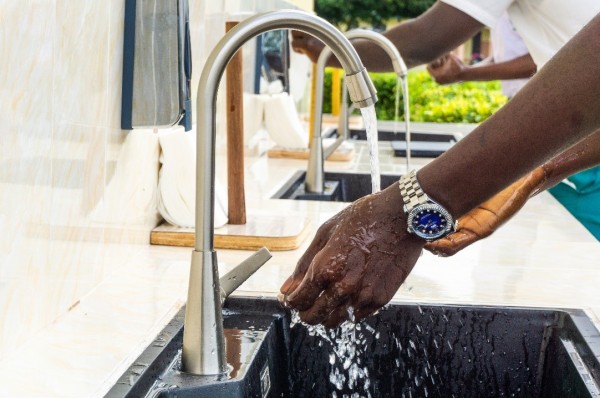The issue with water flowmeters
Metrologists tackle an ongoing challenge in Mongolia’s water supply

The Challenge
Erdenet is the second-largest city in Mongolia. Its water distribution network connects households and enterprises to several reservoirs via a series of pipelines. Ultrasonic flowmeters, which are installed at the reservoirs’ outlets and at other major locations of the system, are used to measure the flow rate through the pipelines. The measured flow rate determines how much a customer pays for their water, so the performance of flowmeters needs to be reliable and accurate. However, the supply and distribution are managed by two separate companies, which can lead to challenges. The distribution company recently raised concern about an apparent difference in these flow measurements, and suspected that there was an issue with verification of the flowmeters at the supplier’s site. Onsite re-verification and inspection were needed.
Our Solution
The company approached MASM, the Mongolian Agency for Standardization and Metrology, and the State Professional inspection agency for help. We assembled a working group of experts that included a professional inspection officer and metrologists from our length team and our volume and fluid flow verification laboratory.
This working group travelled to two sites to carry out the necessary measurements. The ultrasonic flowmeters used in the water network utilize differential detection technology to measure the transmission time of a sound wave travelling in two directions – with the flow and against it. The in-built software uses this information and some predetermined parameters to calculate the flow rate. The primary parameters are the internal diameter of pipeline and the true distance between two sensors. From these, the flow rate and volume of the water can be calculated.
After calibrating the internal diameter of pipeline at both sites, the working group found no significant discrepancy between the two flowmeters. They also looked at other factors that may have contributed the measurement error. This investigation revealed that the installation requirements of the flowmeters within the distribution pipelines were incomplete, and this may have influenced the water flow velocity. The working group suggested that water quality and the presence of contaminants may have caused wear and tear of flowmeter’s sensors, which in turn could affect the measurement of the pipe’s internal diameter.
The Impact
The working group produced a report on their findings and delivered it to the distribution company. The calibration and verification certificates were issued for both flowmeters. The report showed that although the water flow volume was consistent at both the sites, the flowmeters themselves were prone to errors due to water quality and to issues with the installation of the meters. As a result, the company has pledged to improve their installation procedure and guidelines, and to schedule regular verification of the flowmeters through length and fluid flow calibrations. The water supply and distribution companies agreed that verification of water quality is also required. The result of this study will have an ongoing impact on how these companies operate, and on the quality of service experienced by their customers.
Quote
“ We learned some important lessons, thanks to our onsite working group investigation. In future, we should pay close attention to those installation requirements and to the subsequent verification of existing ultrasonic flowmeters installed at different urban areas of Mongolia, in order to avoid adverse consequences”
- Jargalsaihan, senior officer at the State Professional Inspection Agency

